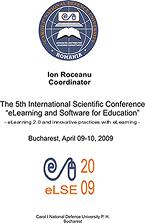HOW TO REDUCE THE CURRENT DIGITAL GAP BETWEEN TEACHERS AND STUDENTS IN ITALIAN SCHOOLS: A PROPOSAL
HOW TO REDUCE THE CURRENT DIGITAL GAP BETWEEN TEACHERS AND STUDENTS IN ITALIAN SCHOOLS: A PROPOSAL
Author(s): Nicolo Antonio Piave, Giustina IadecolaSubject(s): Education
Published by: Carol I National Defence University Publishing House
Keywords: informal learning; web 2.0; digital natives; digital immigrants; school
Summary/Abstract: Recent studies highlight how significant the gap is between digital natives and digital immigrants and what the consequences are in the way by which education is organised today for young people. Traditional formal settings appear old and boring because they make refer primarily to physical tools such as books, neglecting the social substrate that students build everyday beyond the classroom. The role of interactions, the networked nature of knowledge and the growing importance of informal learning dynamics, risk to increase the digital gap, if teachers do not provide to update their competencies and modify the way of conducting lesson in class. Multimedia tools are now inevitable ever since they have entered in people's everyday life and represent a significant part of their learning. So, it is necessary for a specific intervention in order to adapt digital immigrants to the viewpoint of young digital natives: first, we must teach the teachers to use contemporary social technologies and media tools with ability and competence; second, we must assure that the media knowledge is not translate into a formal education about simple tools. The second level of intervention in fact regards the web 2.0 paradigm and the way by which educational technologies have to be viewed, focusing on the multimedia contents and not on multimedia tools. This quality passage is essential to allow the input of web 2.0 viewpoint within traditional formal education, favouring a real dialogue between formal and informal learning. The paper deals with these questions and proposes some aspects of training for teachers which can respect the said conditions.
Journal: Conference proceedings of »eLearning and Software for Education« (eLSE)
- Issue Year: 5/2009
- Issue No: 01
- Page Range: 157-162
- Page Count: 6
- Language: English

